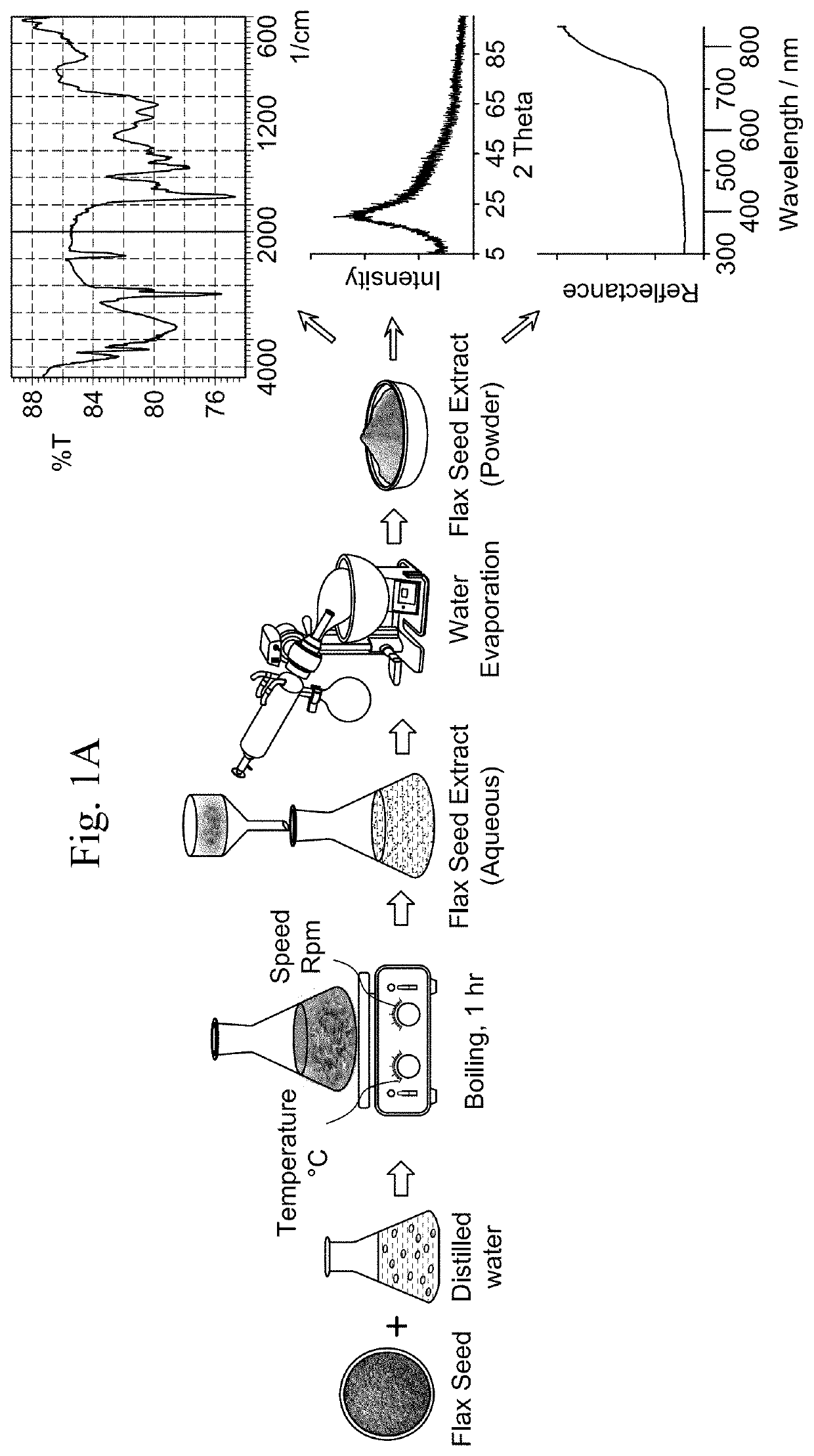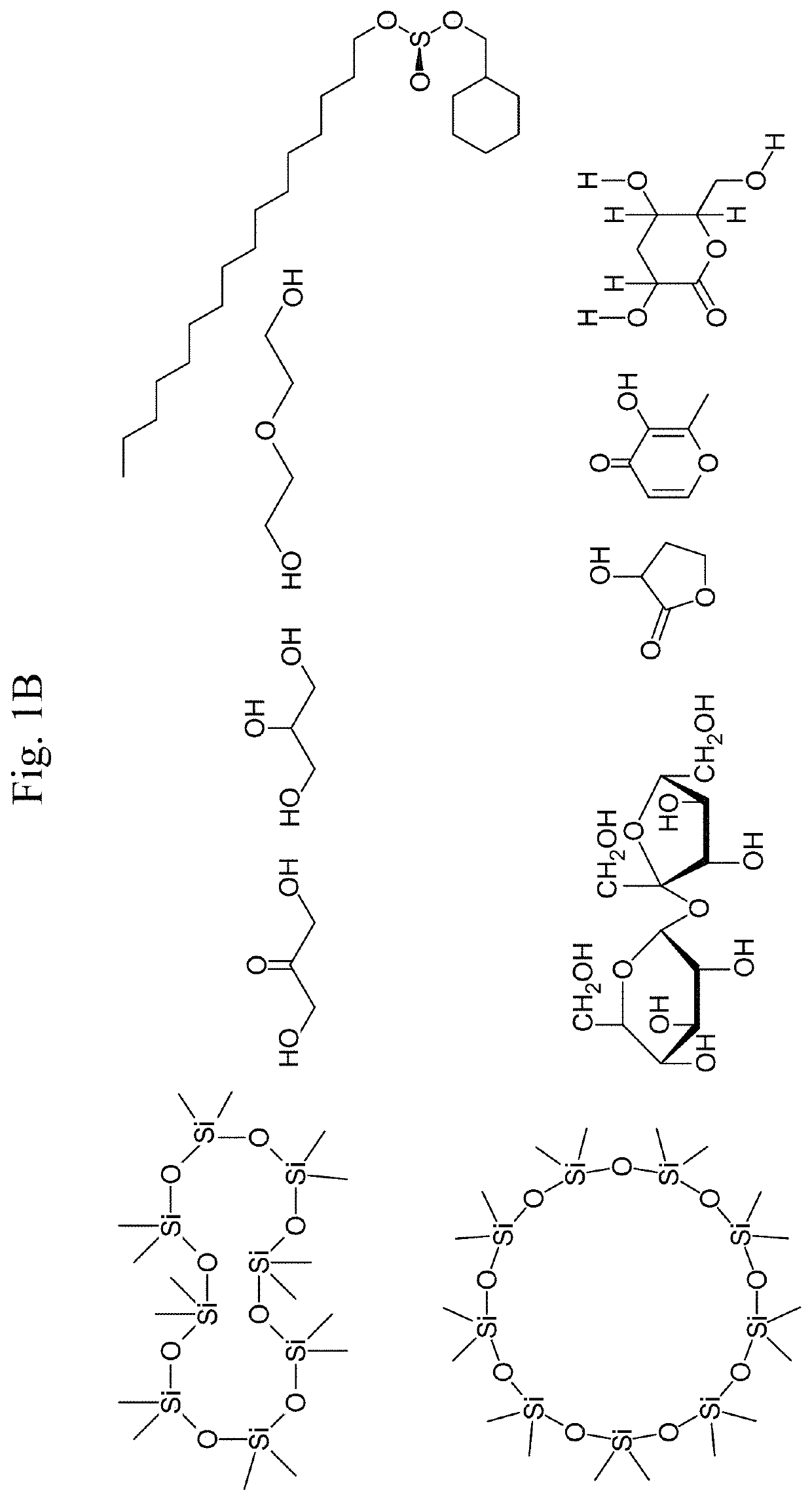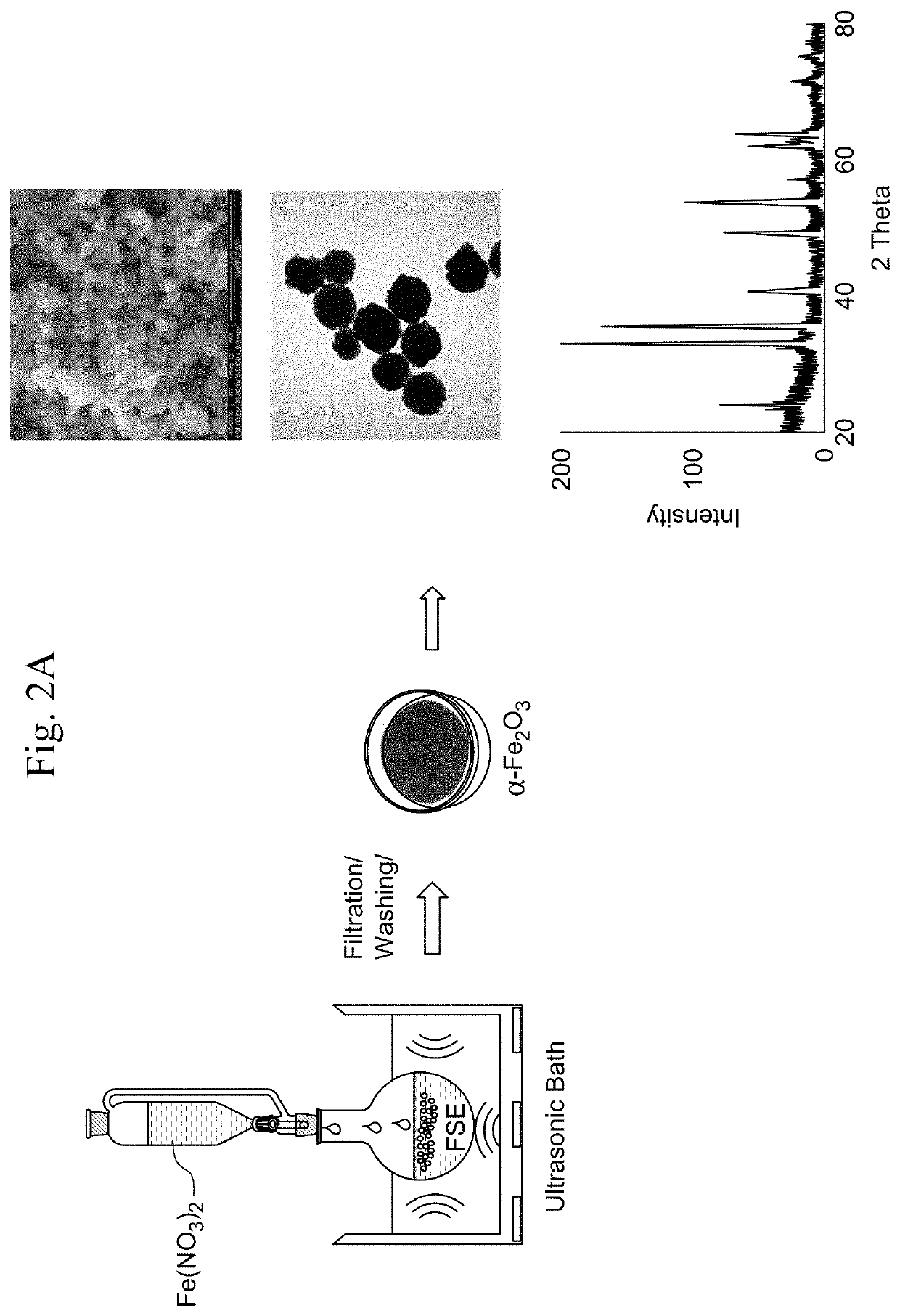Alpha-FE2O3 nanoparticles and method of making and use thereof in photodegradation of organic pollutants, as a photocatalyst and as an antibacterial composition
a technology of organic pollutants and nanoparticles, which is applied in the direction of inorganic chemistry, magnetic materials, crystal growth processes, etc., can solve the problems of high energy consumption, high energy consumption, and water remediation becoming a worldwide problem
- Summary
- Abstract
- Description
- Claims
- Application Information
AI Technical Summary
Benefits of technology
Problems solved by technology
Method used
Image
Examples
examples
Experimental
Preparation of Flax Seed Extract (FSE)
[0117]The Flax Seeds (FS) was provided from local paddy mill in western region, Egypt. It was washed with distilled water, and then dried in the air. The dried seed was then ground to a fine powder. 50 g of the fine FS powder was suspended in 750 mL distilled water and the resulted FS suspension was boiled for 1 hour under reflux condition. The resulted gelatinous Flax Seed Extract (FSE—also referred to herein as Linaceae Seed Extract LSE) suspension was then filtered to remove the solid particles and then stored in the fridge. To obtain the powder of FSE, the FSE suspension was evaporated using rotary evaporator at 25° C. and 20 mbar, resulted in shiny, yellowish crystals which were then characterized using FTIR, XRD and UV-Vis diffuse Reflectance. Additionally, the solid extract was dissolved in methanol, and the GC-MS measurement was performed. The schematic representation of FSE preparation is depicted in FIG. 1.
Eco-Friendly Synt...
PUM
| Property | Measurement | Unit |
|---|---|---|
| diameter | aaaaa | aaaaa |
| sphericity | aaaaa | aaaaa |
| pH | aaaaa | aaaaa |
Abstract
Description
Claims
Application Information
 Login to View More
Login to View More - R&D
- Intellectual Property
- Life Sciences
- Materials
- Tech Scout
- Unparalleled Data Quality
- Higher Quality Content
- 60% Fewer Hallucinations
Browse by: Latest US Patents, China's latest patents, Technical Efficacy Thesaurus, Application Domain, Technology Topic, Popular Technical Reports.
© 2025 PatSnap. All rights reserved.Legal|Privacy policy|Modern Slavery Act Transparency Statement|Sitemap|About US| Contact US: help@patsnap.com



